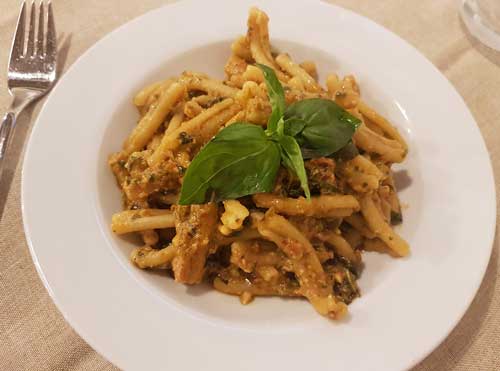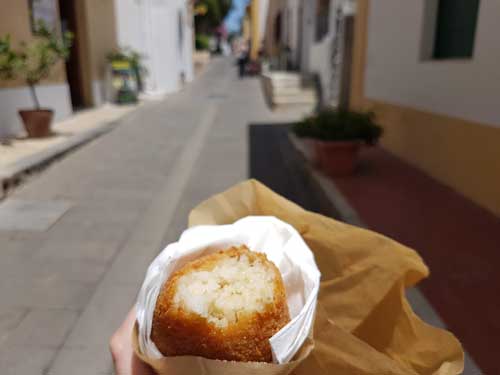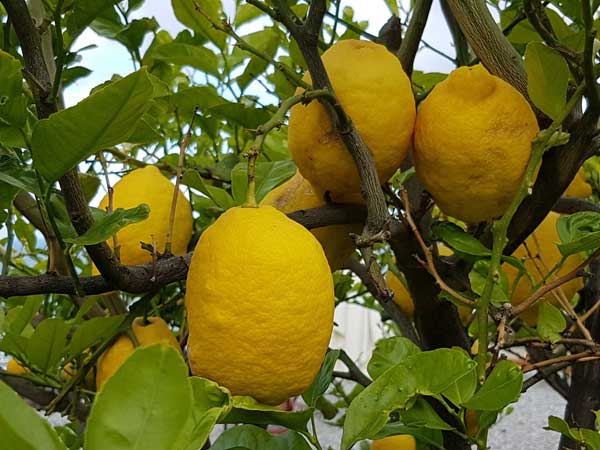Sicily is justly famed for its food and drink, and the island’s cuisine reflects the different cultural influences which have shaped Sicily over the centuries.
- Sicily destinations and practicalities: full menu (at foot of this page)
Sicily’s rich desserts and pastries are famed far and wide. Cannoli, sweet tubes of ricotta, can be found all over Italy but those in Sicily are the original and the best (alas, vegetarians should note these are generally coated in pig fat). Arab influences show in the popular brightly-coloured sweets made of marzipan, and in the sinfully rich cassata, which comes in both ice cream and cake varieties, made from ricotta with bits of candied fruit and chocolate. Ice cream, gelato is another speciality, to be enjoyed during a leisurely evening passeggiata.
Sicily’s home-grown products make for a rich and varied spread, ranging from bright oranges and lemons to tasty cheeses like pecorino. Seafood is another staple of the diet, particularly around the coastal towns. Pasta with sardines (con le sarde) is local favourite. Around Catania you will find pasta or pizza alla Norma (named after Catania boy Bellini’s opera), with tomato, ricotta and aubergine. Couscous, eaten particularly in the west of the island, is another example of Sicily’s mixed food heritage.

One of the treats of a hot day is a good granita. This refreshing slush of fruit and ice comes served with both a spoon and a straw, and is a delicious way to cool down in the sunshine. The most zingy flavours are fresh local lemons or the Sicilian oranges which can also be enjoyed as a freshly-squeezed juice (a spremuta).
Historically, Sicily’s most renowned wine is Marsala, a dessert wine exported for centuries, but there are several good reds and whites from different parts of the island, including Etna, where grapes are grown on the fertile slopes of the volcano. Some modern and family-run vineyards offer tastings and tours, which makes an interesting as well as enjoyable holiday activity. Restaurants invariably offer a house wine, white or red, which is generally cheap, local and of reasonable quality. A speciality of the eastern coast is vino alla mandorla, made with almonds. One of my favourites is the sweet Malvasia of the Aeolian islands.
Street food is popular throughout the island and particularly in the cities, where there’s an obvious appeal to food you can grab and go. Arancini, now popular internationally, are a delicious speciality, coming with a range of different fillings (try them with pistachio…).

As well as all the local culinary specialities, you’ll also find all the normal Italian foods like pizza and pasta in every variety. Cheap and tasty hot snacks can be bought from a tavola calda, rosticceria or a bar, where they’ll heat sandwiches for you. You can stock up on picnic food at supermarkets or general stores, where they may make up rolls for you. Desserts sometimes seem like an afterthought in Italian restaurants; you can usually find a more inspiring (and economical) choice at one of the island’s many pastry shops (pasticcerie).
